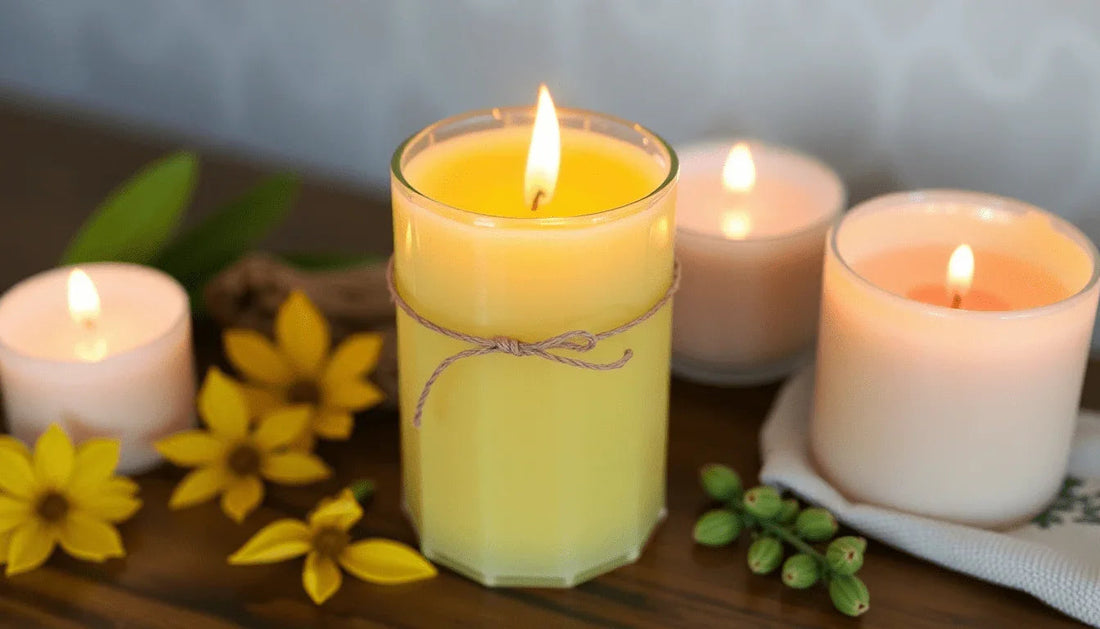
Is It Really Important to Use Beeswax Candle? Benefits, Health & Environmental Insights
Is it Really Important to Use Beeswax Candle?
When it comes to creating a cozy, inviting atmosphere at home, candles have always played a big role. Among the many options available, beeswax candles stand out. But is it really important to use beeswax candle over others? Let’s explore why these naturally made candles deserve a special place.
What Are Beeswax Candles?
Beeswax candles are made from the natural wax produced by honeybees. This wax is filtered and shaped into candles without the need for synthetic additives. Unlike paraffin candles, which come from petroleum, or soy candles derived from soybeans, beeswax is completely natural and renewable.
What makes beeswax candles unique is their natural honey scent and slow, clean burn. These candles don’t drip or give off black soot like some paraffin candles do. They also have a higher melting point, meaning they burn longer and hold their shape better under heat.
Benefits of Beeswax Candles
One of the major benefits of beeswax candles is their ability to purify the air. When burned, beeswax releases negative ions, which help to remove pollutants like dust and allergens from the air. This makes the air in your home fresher and cleaner.
Compared to other candles, beeswax candles have a longer burn time due to their dense structure. This means you get more candlelight for your money. Plus, they burn cleaner, producing very little smoke or soot.
Another great advantage is their hypoallergenic quality. For those sensitive to fragrances or chemicals, beeswax candles are less likely to cause reactions, unlike some synthetic scented candles.
Beeswax Candle Health Effects
Research books like "Beeswax and Its Role in Health and Environment" by J. Martin have highlighted how beeswax candles can improve indoor air quality. According to a 2022 study by the Environmental Protection Agency (EPA), burning beeswax candles reduces airborne toxins compared to paraffin candles, which release harmful chemicals.
The natural composition of beeswax means fewer chances of respiratory irritation or allergic reactions. This makes beeswax candles a safer alternative, especially for households with children, pets, or people with asthma.
Environmental Impact of Candles
When looking at candles’ impact on the environment, not all are equal. Paraffin candles come from non-renewable petroleum resources and release pollutants when burned. Soy candles are plant-based and biodegradable but often rely on intensive farming practices.
Beeswax stands out as a sustainable option. Since bees naturally produce wax during the honey-making process, harvesting beeswax doesn’t harm the environment or the bees when done responsibly. It is fully biodegradable and does not add pollutants to the air or soil.
Organic Candles vs Synthetic Candles
An organic candle is made using natural ingredients without harmful chemicals or additives. Beeswax candles fall under this category.
Synthetic candles, such as those made from paraffin, often contain additives like artificial scents and dyes. These can emit volatile organic compounds (VOCs) when burned, which contribute to indoor pollution and potential health risks.
Organic beeswax candles avoid these issues. Their pure, clean burn is better for you and the planet. As noted in "Organic vs Synthetic: The Candle Debate" by L. Smith, choosing organic beeswax candles helps reduce your exposure to toxins and supports sustainable practices.
A Brief Look at Beeswax Candle History
Beeswax candles have a rich cultural past. Before the rise of paraffin, beeswax was prized for its bright, clean light. Ancient civilizations, including the Greeks and Egyptians, used beeswax candles in religious ceremonies and daily life.
In medieval Europe, beeswax candles were a symbol of wealth and purity, often reserved for churches and royalty. Their pleasant aroma and smoke-free burn made them a preferred choice for centuries.
Today, with increased awareness about natural living, beeswax candles are enjoying a well-deserved revival.
Choosing the Right Candle for Your Home
When buying beeswax candles, look for those labeled 100% pure beeswax without blends. Avoid candles with added paraffin or synthetic scents.
You can recognize quality beeswax candles by their natural honey color or slight off-white hue. Pure beeswax candles also feel heavier and more solid than synthetic ones.
For safe candle use, always burn candles on heat-resistant surfaces away from drafts. Trim the wick to about ¼ inch before lighting to avoid soot and uneven burning.
Conclusion
So, is it really important to use beeswax candle? Considering their natural origin, air-purifying benefits, cleaner burn, health safety, and environmental friendliness, beeswax candles stand out as a truly valuable choice.
They not only light up your space but also support a healthier home and planet. Choosing beeswax candles is a small step that brings lasting benefits, blending tradition with modern wellness.
References:
- Schatz, B. "The Complete Guide to Candle Making". New York: Flame Publisher, 2018.
- Martin, J. "Beeswax and Its Role in Health and Environment". Green Living Press, 2020.
- Environmental Protection Agency (EPA). "Indoor Air Quality and Candle Use". 2022.
- Smith, L. "Organic vs Synthetic: The Candle Debate". Candle Science Journal, 2019.
